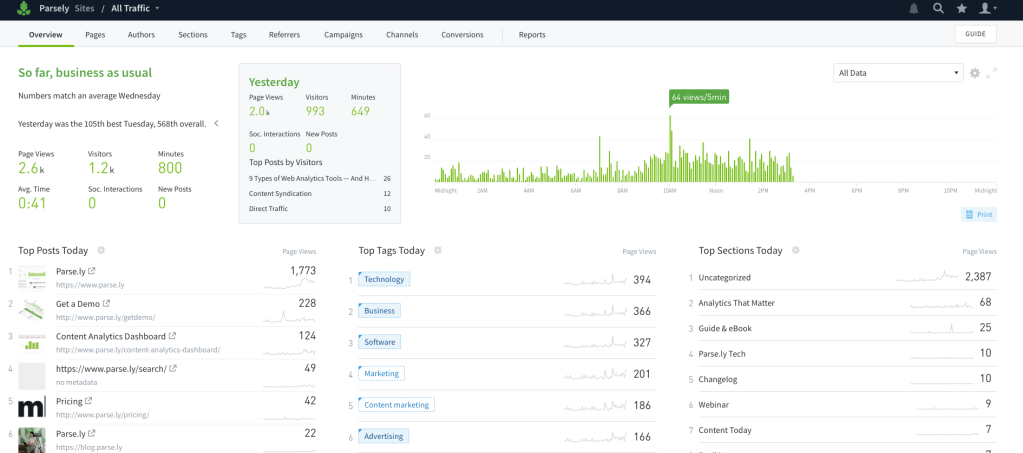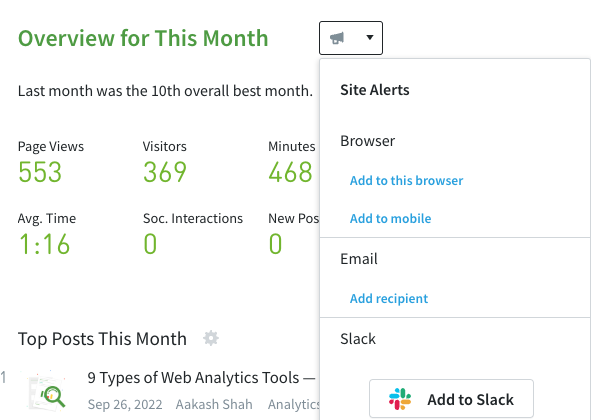How to Predict Viral Content: The Power of Parse.ly’s Content Analytics

In the lightning-paced world of digital media, viral content can be a game-changer. It has the potential to significantly boost your reach, engagement, and brand awareness.
But creating viral content is not merely an exercise in luck. It’s increasingly becoming a science, aided by predictive analytics and data.
The science of viral content
Viral content has certain characteristics—it strikes an emotional chord, screams hyper-relevancy to an audience, and often carries elements of novelty or whimsy. However, predicting what will “go viral” is not a straightforward task due to its inherently unpredictable nature.
Yet, with advanced predictive analytics, this challenge can be considerably eased.
Why real-time analytics matter for viral content
Google Analytics is infamous for its poor portrayal of live performance data. So if your business is interested in capitalizing on current audience preferences, it’s critical you have a tool that accurately offers that information.
Parse.ly’s real-time analytics track sudden spikes in audience engagement, which often signify potential viral content. For instance, suppose a piece tagged as “sustainability” suddenly sees a tenfold increase in shares and comments. This could be an early indicator of that content going viral, allowing you to strategically enhance visibility through syndication, or additional email and social pushes.
Parse.ly’s Overview: your one-stop-shop for what’s trending
Parse.ly leverages predictive analytics, data aggregation, and machine learning to analyze content trends across your sites. All these tools are displayed on the Overview page of the Parse.ly Dashboard.
The Overview page offers a customizable interface for quickly visualizing the data you need, all in one place. When looking for top trending content, we recommend the following settings:
- Top Posts
- Top Sections
- Top Tags
From there, you can decide if you want to view trends by a specific metric like pageviews or conversion, and within a certain time frame—anywhere from months to days, or even 10-minute intervals.
Yeah, Parse.ly is that real-time.
While we normally recommend using additional metrics alongside pageviews, sorting this content by the amount of traffic to the page or post is ideal for tracking topics that may be trending across your channels.

Pro Tip: Set up alerts for your Overview page to automatically notify you when certain content of interest begins to trend. This can be done in your browser, via email, or even through Slack.

The posts, tags, and sections highlighted on the Overview page will show you exactly which content to push out for further circulation—and help you decide what topics to write about next.
Click each item in the list to see if it’s rising or falling in popularity. If the frequency of views are rising, you’ve caught the topic at the perfect time to capitalize on its trending popularity.

Alternatively, if views are starting to taper off, you may still be able to recirculate that post or topic with success. If it feels like the opportunity has passed, look through other top tags and posts to see what’s gaining traction and push those out instead.
Monitoring omnichannel referrers
Parse.ly offers powerful analytics that allow you to track and analyze user traffic from a variety of channels—search engines, social media, email newsletters, and more. Like early warning radar, these channels often offer the first hint of a potentially viral content piece. For example, a sudden spike in referrals from Facebook or Twitter may signal a piece of content gaining momentum.
Simultaneously, by keeping an eye on real-time user engagement metrics like pageviews, engaged time, and social shares across these various channels, you can gauge what’s resonating with your audience.
For instance, if you notice that an article is getting unusually high traffic from LinkedIn while also clocking high on-page engagement, it’s a clear sign that the content is engaging with a professional audience. You might then quickly amplify its visibility on LinkedIn, potentially increasing its virality among this demographic.

Combining art and science
Predicting viral content is an art and a science, made significantly easier with Parse.ly’s predictive analytics and data insights. Understanding audience preferences in real-time, learning from past performance, and staying in sync with social trends can take your content strategy to the next level.
Embrace these data-driven tools, and you’ll not only predict viral content better but also serve your audience with more of what they love.
Ready to see Parse.ly for yourself?